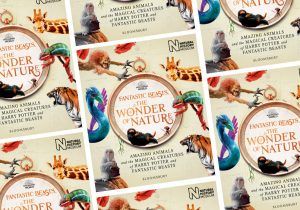
Undersea Caves Primary Resource
Discover the secrets of the blue holes…
This primary resource explores the geographical phenomenon of undersea caves. Discover the hidden secrets of this unique underwater environment. How have undersea caves formed over time? What creatures live there? What incredible fossils have been found in undersea caves?
By investigating an incredible cave system off the coast of the Bahamas, children will learn about the unique environment of undersea caves in this National Geographic Kids geography primary resource.
The teaching resource can be used in study group tasks for discussing geographical formations as well as marine environments and habitats. It can be used as a printed handout for each pupil to review and annotate, or for display on the interactive whiteboard, using the images included in the resource for class discussion.
Activity: Ask children to imagine they are deep sea divers exploring undersea caves. Pupils could write an account of their aquatic adventure. Their stories could include facts and information from our primary resource, as well as their own imaginative ideas. What creatures do they see? What fossils do they find? What do the caves look like?
N.B. The following information for mapping the resource documents to the school curriculum is specifically tailored to the English National Curriculum and Scottish Curriculum for Excellence. We are currently working to bring specifically tailored curriculum resource links for our other territories; including South Africa, Australia and New Zealand. If you have any queries about our upcoming curriculum resource links, please email: schools@ngkids.co.uk
This Undersea Caves primary resource assists with teaching the following Geography objectives from the National Curriculum:
- The national curriculum for geography aims to ensure that all pupils understand the processes that give rise to key physical and human geographical features of the world, how these are interdependent and how they bring about spatial variation and change over time.
National Curriculum Key Stage 1 Geography objective:
Pupils should be taught to:
- Name and locate the world’s seven continents and five oceans.
- Use basic geographical vocabulary to refer to: key physical features, including: beach, cliff, coast, forest, hill, mountain, sea, ocean, river, soil, valley, vegetation, season and weather.
National Curriculum Key Stage 2 Geography objective:
- Locate the world’s countries, using maps to focus on Europe (including the location of Russia) and North and South America, concentrating on their environmental regions, key physical and human characteristics, countries, and major cities.
- Describe and understand key aspects of: physical geography, including: climate zones, biomes and vegetation belts, rivers, mountains, volcanoes and earthquakes, and the water cycle.
This Undersea Caves primary resource assists with teaching the following Science objectives from the National Curriculum:
The national curriculum for science aims to ensure that all pupils:
- Develop understanding of the nature, processes and methods of science through different types of science enquiries that help them to answer scientific questions about the world around them.
National Curriculum Key Stage 2 (Year 3) Science objective:
Pupils should be taught to:
- Describe in simple terms how fossils are formed when things that have lived are trapped within rock.
This Undersea Caves primary resource assists with teaching the following Social Studies First level objective from the Scottish Curriculum for Excellence:
- By exploring a natural environment different from my own, I can discover how the physical features influence the variety of living things.
Scottish Curriculum for Excellence Third level Social Studies objectives:
- Having investigated processes which form and shape landscapes, I can explain their impact on selected landscapes in Scotland, Europe and beyond.
Scottish Curriculum for Excellence Fourth level Social Studies objectives:
- I can explain how the interaction of physical systems shaped and continue to shape the Earth’s surface by assessing their impact on contrasting landscape types.
Download primary resource
More Like

The Awesome New Asterix movie!

Satellites set to track animals from space!

Fantastic Beasts: The Wonder of Nature









LEAVE A COMMENT
THANK YOU
Your comment will be checked and approved shortly.
WELL DONE,
YOUR COMMENT
HAS BEEN ADDED!
COMMENTS
CUSTOMIZE YOUR AVATAR